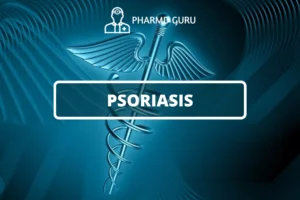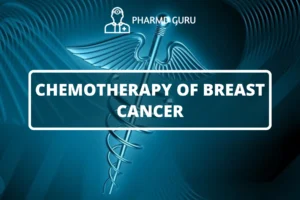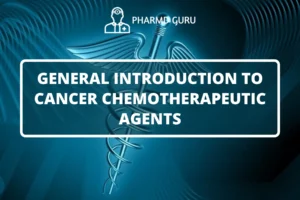Chemotherapy plays a crucial role in the management of leukemia, a type of cancer that affects the blood and bone marrow. It is a systemic therapy that uses powerful drugs to destroy or control cancer cells throughout the body. This article provides an overview of the use of chemotherapy in leukemia treatment, including its goals, administration, common drugs used, potential side effects, and the evolving landscape of targeted therapies.
SCROLL DOWN TO THE BOTTOM OF THIS PAGE FOR ACTUAL NOTES.
Table of Contents
- Introduction
- Goals of Chemotherapy in Leukemia
- Administration of Chemotherapy
- Common Chemotherapy Drugs for Leukemia
- Potential Side Effects
- Targeted Therapies in Leukemia
Introduction
Leukemia is a complex group of blood cancers characterized by the overproduction of abnormal white blood cells. Chemotherapy is a cornerstone of leukemia treatment, aiming to eliminate cancer cells, induce remission, and prolong survival. It can be used in combination with other treatment modalities, such as radiation therapy or stem cell transplantation, depending on the type and stage of leukemia.
Goals of Chemotherapy in Leukemia
The goals of chemotherapy in the treatment of leukemia are multi-fold:
- Induction of Remission: The primary goal of chemotherapy is to induce remission, which refers to the absence of detectable cancer cells in the blood and bone marrow. Achieving remission is a crucial step towards long-term control and potential cure.
- Consolidation: After remission is achieved, consolidation chemotherapy is often given to eradicate any remaining cancer cells and prevent relapse.
- Maintenance Therapy: In some cases, maintenance chemotherapy may be prescribed to keep the leukemia in remission and prevent its recurrence.
- Palliative Care: In advanced or relapsed cases of leukemia, chemotherapy can help control the disease, manage symptoms, and improve the quality of life.
Administration of Chemotherapy
Chemotherapy for leukemia can be administered in different ways:
- Oral Administration: Some chemotherapy drugs are available in pill or liquid form, allowing patients to take them orally at home. This offers convenience and flexibility, especially for long-term maintenance therapy.
- Intravenous (IV) Administration: Intravenous chemotherapy involves the direct delivery of drugs into the bloodstream through a vein. This systemic approach targets cancer cells throughout the body and is commonly used in induction and consolidation phases.
- Intrathecal Administration: In certain cases, chemotherapy may be given directly into the cerebrospinal fluid through a lumbar puncture. This is to prevent or treat leukemia cells that may have spread to the central nervous system.
Common Chemotherapy Drugs for Leukemia
Several chemotherapy drugs are used in the treatment of leukemia. The choice of drugs depends on the specific type and subtype of leukemia, as well as other individual patient factors. Commonly used chemotherapy drugs for leukemia include:
- Cytarabine (Ara-C): Cytarabine is a cornerstone chemotherapy drug for leukemia, often used in combination regimens. It works by interfering with DNA synthesis in cancer cells, leading to their destruction.
- Anthracyclines: Drugs such as daunorubicin and idarubicin are potent chemotherapy agents used in acute myeloid leukemia (AML) treatment. They work by inhibiting DNA replication and damaging cancer cells.
- Vinca Alkaloids: Drugs like vincristine and vinblastine interfere with cell division in leukemia cells, disrupting their growth and proliferation.
- Asparaginase: Asparaginase is used in the treatment of acute lymphoblastic leukemia (ALL). It works by depleting the levels of asparagine, an essential nutrient for leukemia cells, thereby inhibiting their growth.
Potential Side Effects
Chemotherapy drugs can cause various side effects, which can vary depending on the specific drugs used, treatment duration, and individual patient factors. Common side effects of chemotherapy for leukemia may include:
- Bone Marrow Suppression: Chemotherapy can affect the production of blood cells in the bone marrow, leading to a decrease in red blood cells, white blood cells, and platelets. This can result in anemia, increased risk of infection, and bleeding tendencies.
- Nausea and Vomiting: Anti-nausea medications can help manage these side effects.
- Hair Loss: Temporary hair loss is a common side effect, but hair usually grows back after treatment.
- Fatigue: Chemotherapy can cause tiredness and fatigue. Rest and adequate sleep are important during treatment.
- Mucositis: Chemotherapy can irritate the lining of the mouth and digestive tract, resulting in mouth sores and difficulty swallowing.
It is essential for patients to communicate any side effects to their healthcare team for appropriate management and support.
Targeted Therapies in Leukemia
In recent years, targeted therapies have emerged as a significant advancement in the treatment of leukemia. These therapies specifically target certain molecules or genetic abnormalities that drive the growth of leukemia cells, offering more precise and effective treatment options. Examples of targeted therapies in leukemia include:
- Tyrosine Kinase Inhibitors (TKIs): TKIs, such as imatinib, dasatinib, and nilotinib, target specific genetic abnormalities, such as the Philadelphia chromosome, which is present in chronic myeloid leukemia (CML).
- Monoclonal Antibodies: Monoclonal antibodies, such as rituximab and alemtuzumab, can selectively bind to leukemia cells, marking them for destruction by the immune system.
The landscape of targeted therapies is continuously evolving, providing new avenues for personalized and targeted treatment approaches in leukemia.
ACTUAL NOTES:




